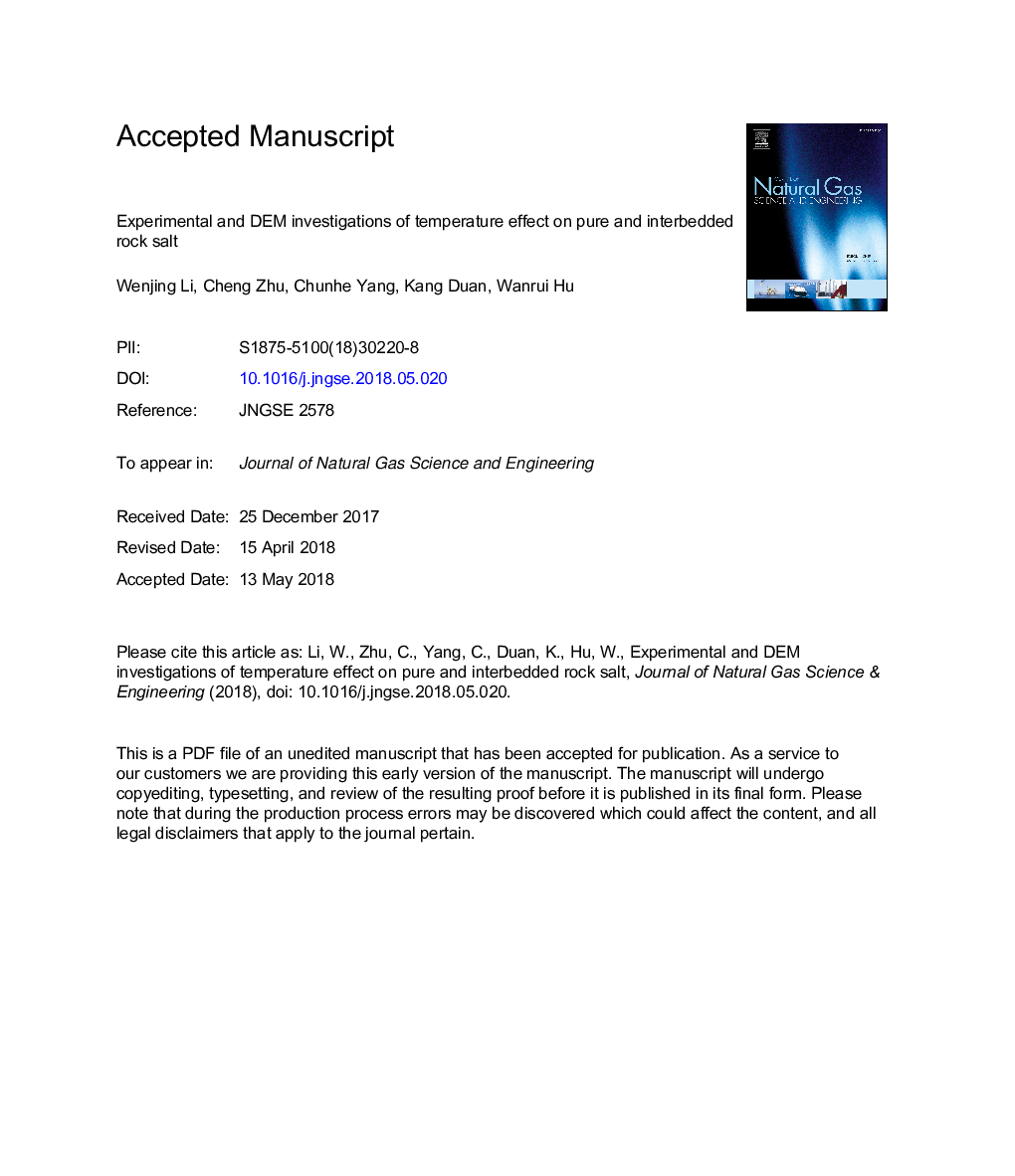| Article ID | Journal | Published Year | Pages | File Type |
|---|---|---|---|---|
| 8127835 | Journal of Natural Gas Science and Engineering | 2018 | 34 Pages |
Abstract
Rock salt is considered as a favorable host rock material for natural gas storage due to its low permeability, fast self-healing ability and unique creep behavior. Characterizing engineering properties of rock salt especially interbedded salt under complicated geological storage conditions associated with temperature variations remains challenging. This research integrates physical and numerical experiments to investigate the temperature effect on the engineering behavior of pure and interbedded salt. Thermo-mechanical coupled triaxial compression tests are carried out on both pure (Ash-grey Rock Salt and Charcoal-grey Rock Salt) and impure (Rock Salt with Mudstone interbedded) rock salt specimens. To reveal the underlying mechanism of thermal-induced deformation and cracking of salt at grain scale, we configure a discrete element model and incorporate smooth-joint contacts to capture the interfacial behavior in the bedded salt. Experimental results indicate that the compressive strength and failure mode of rock salt is highly susceptible to temperature. The increasing temperature enhances the ductility of salt whereas lowers its peak compressive strength. Numerical results provide a micromechanical explanation that the attenuated compressive strength of salt under high temperature is attributed to the evolution of micro-cracks. The presence of the mudstone layer increases the overall material strength, confines the crack propagation orientations, and therefore limits the transverse deformation of the bedded salt. This study is expected to bring new insights into the micro-mechanical study of bedded salt and improve the long-term assessment of geological storage facilities.
Related Topics
Physical Sciences and Engineering
Earth and Planetary Sciences
Earth and Planetary Sciences (General)
Authors
Wenjing Li, Cheng Zhu, Chunhe Yang, Kang Duan, Wanrui Hu,
